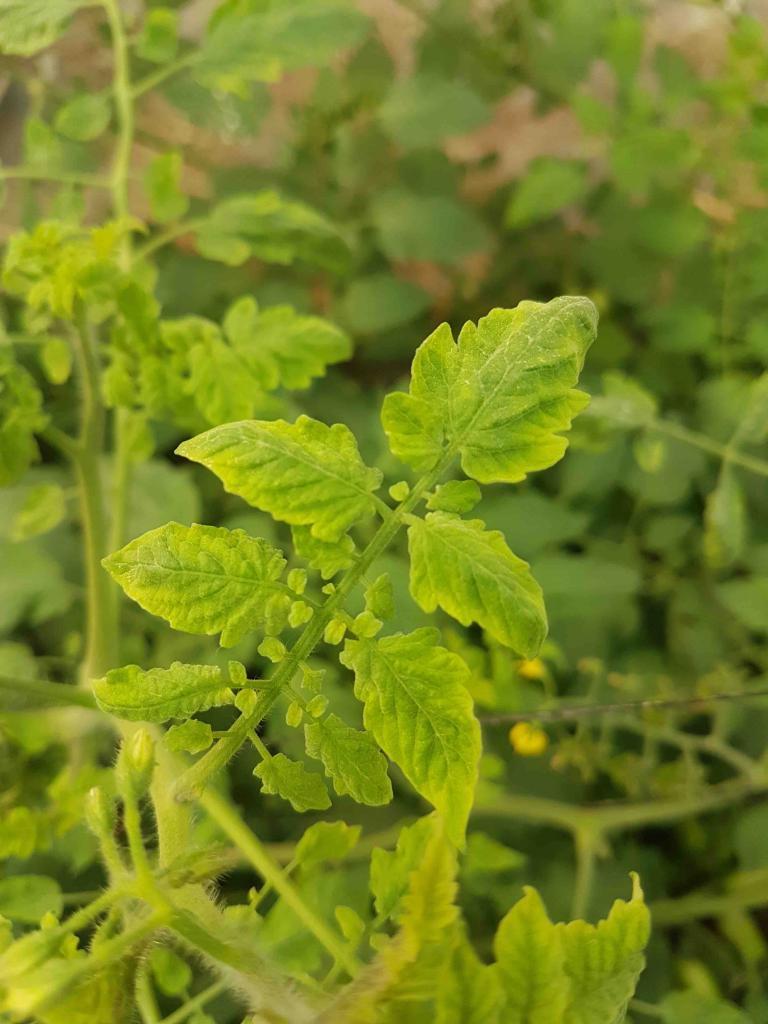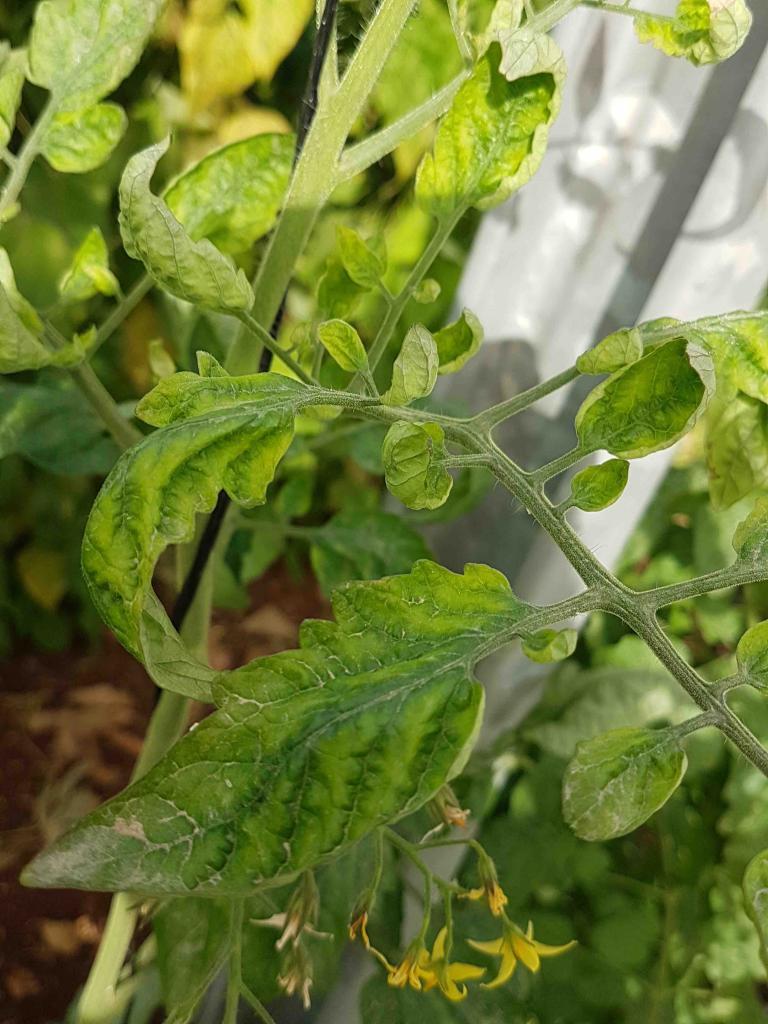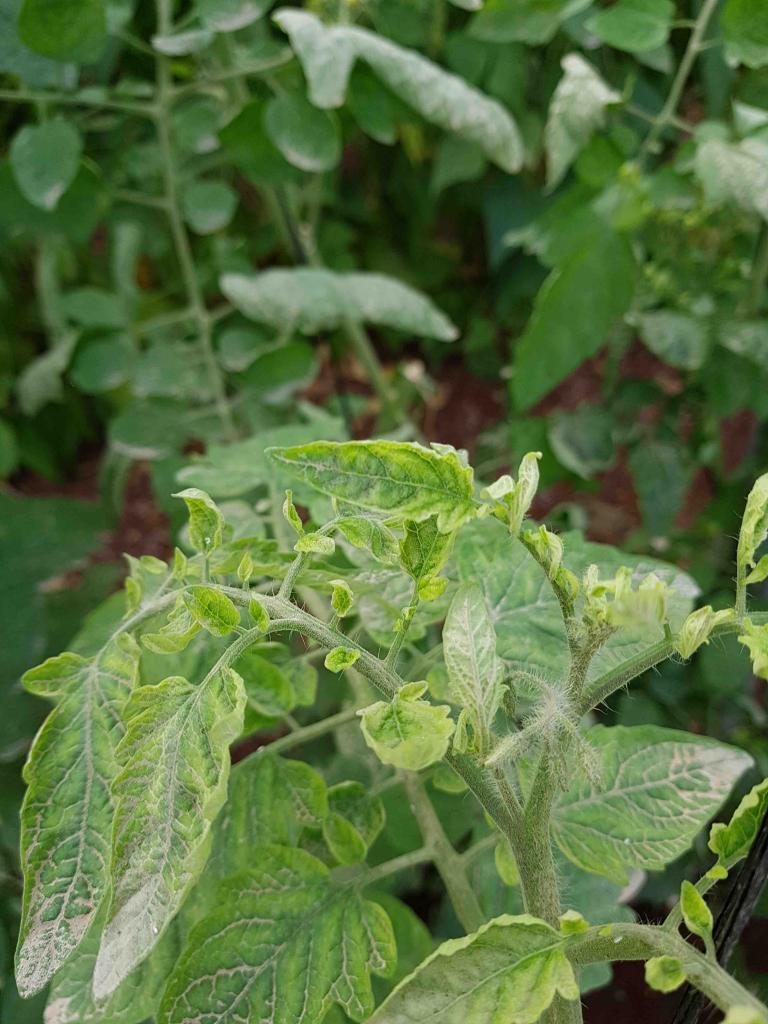Virus keriting daun tomat
Tomato, bean, and pepper
Tomato yellow leaf curl virus (TYLCV) is a member of the begomoviruses genus. TYLCV is mainly spread by whiteflies (Bemisia tabaci) and is common around the world. TYLCV has a major influence on worldwide tomato production; it is responsible for the reduction of tomato yields and the quality of tomatoes.
At an early stage of the growing season, young infected tomato plants exhibit severe stunting with one or more symptoms, including: a “bushy appearance” caused by smaller than usual leaflets, yellowing and curling of leaves, and yield reductions.
Tanaman yang terinfeksi oleh virus tidak terdapat perlakuan khusus dan tidak dapat disembuhkan. Oleh karena itu, jika terdapat beberapa tanaman yg terinfeksi oleh virus, tanaman tersebut harus segera dibuang/dicabut dari area penanaman.
Tanaman atau bibit yang tahan terhadap penyakit merupakan syarat penting dalam budidaya.
Jaringan dalam tanaman, jaringan tanaman harus tertutup dan hindarkan luka atau lubang pada bagian tanaman.
Kebersihan area penanaman adalah hal terpenting, hindarkan tanaman dari gulma, sisa-sisa tanaman, bagian tanaman yang rusak, pertumbuhan tanaman yang tidak di ingginkan dan tanaman lain yang bukan merupakan tanaman utama budidaya.
Alat pemantauan hama (perangkap) sangat penting untuk mengetahui sebaran populasi dari hama.
Aplikasi insektisida yang sering digunakan untuk lalat putih adalah cypermethrin, deltametrin, bifenthrin, diafenthiuron, thiamethoxam, imidacloprid, acetamiprid, buprofezine, spiromesifen, cyantraniliprole, spirotetramat, and synthetic terpenes extract of chenopodium.
azadirachtin, potassium salt of fatty acids, beauveria bassiana strain GHA neem oil, tanaman minyak lainya
Amblyseius swirskii adalah musuh alami yang tersedia secara komersial dan mampu mengendalikan populasi kutu kebul secara signifikan.
*Names marked in red are considered to be highly poisonous to beneficial insects.
*Names marked in green are considered to be organic and IPM (integrated pest management) compatible.
Image Gallery


